Colors and Shapes: The Psychological Impact of Logos in Therapy Settings
Introduction
Logos serve as powerful symbols that communicate a brand’s identity and values. Within therapy settings, the careful selection of colors and shapes in logos can significantly impact the psychological well-being and perceptions of clients. Colors evoke emotions, while shapes convey meaning, both of which can influence the therapeutic environment. This article explores the intricate relationship between colors, shapes, and their psychological effects, specifically in the context of therapy settings.
The Psychology of Color
Emotional Associations with Colors
Colors possess the ability to evoke emotional responses that can vary based on individual experiences and cultural backgrounds. Research has shown that certain colors tend to elicit similar psychological responses across different populations:
-
Red: Associated with energy, passion, and urgency. In therapy, a logo incorporating red may invoke feelings of warmth or alertness, but overuse can lead to anxiety and agitation.
-
Blue: Often linked to calmness, trust, and reliability. A therapy logo featuring blue can create a soothing environment, promoting relaxation and open communication.
-
Green: Harmonious and restorative, green is associated with nature and balance. In therapeutic contexts, green can foster feelings of tranquility and renewal, making it an ideal choice for logos.
-
Yellow: A color of optimism and cheerfulness, yellow can stimulate creativity and joy. However, too much yellow can lead to frustration and agitation, which may counteract therapeutic goals.
-
Orange: A blend of red and yellow, orange encourages enthusiasm and socialization. It may be effective in family or group therapy settings, promoting engagement among participants.
-
Purple: Symbolizing spirituality and introspection, purple may resonate with themes of self-discovery, making it suitable for therapeutic practices focused on personal growth.
Cultural Considerations
The impact of color can also be culturally contingent. For example, while white is often associated with purity and simplicity in Western cultures, it may represent mourning in some Eastern traditions. Understanding these cultural nuances is crucial for therapists who wish to create a welcoming environment for diverse clientele.
The Psychology of Shape
The Significance of Shapes
Shapes convey meanings that go beyond their visual representation. They can influence perceptions, emotions, and behaviors. Here’s a look at common shapes and their associated psychological implications:
-
Circles: Symbolizing unity, wholeness, and inclusion, circles can foster feelings of safety and connection. Therapy logos with circular designs can evoke a sense of belonging, essential in therapeutic relationships.
-
Triangles: Associated with stability and direction, triangles can represent growth and transformation. The use of triangles in therapy logos may inspire clients to pursue upward growth and personal development.
-
Squares and Rectangles: These shapes evoke feelings of strength, stability, and reliability. They can suggest security and trustworthiness, qualities vital in a therapeutic setting.
-
Lines: Horizontal lines can denote calmness and tranquility, while vertical lines suggest power and strength. Diagonal lines often represent movement and energy, which can be motivational in therapy-focused on personal change.
Combining Shapes and Colors
The interaction between colors and shapes can create complex psychological effects. For instance, a blue circle may evoke feelings of safety, while a green triangle can inspire growth. Comprehensive consideration of both elements can enhance the therapeutic ambiance established by a logo.
The Role of Logos in Therapeutic Environments
Creating a Safe Space
Logos play a critical role in establishing the identity of therapy practices. A thoughtfully designed logo featuring the appropriate combination of colors and shapes can foster an inviting atmosphere. Clients who feel comfortable and safe are more likely to engage fully in the therapeutic process.
Case Study: The Use of Logos in Family Therapy
A family therapy center redesigns its logo to incorporate a green circle with a nurturing hand in the center. The green signifies growth and healing, while the circle symbolizes unity and connection. This logo effectively communicates the center’s commitment to fostering healthy family relationships, making it easier for families to feel comfortable when entering therapy.
Warping Expectations
Logos not only represent services but also set expectations regarding the therapeutic experience. For instance, a logo that mirrors playfulness (using bright colors and whimsical shapes) might appeal to children and families, while a more subdued and professional logo may attract adult clients seeking a serious and committed therapeutic experience.
The Importance of Consistency
Consistency in branding is crucial for establishing trust with clients. A cohesive visual identity—including logos, color schemes, and fonts—across all therapy materials (business cards, websites, brochures) reinforces the message conveyed by the logo design and solidifies the perceived ethos of the practice.
The Awareness of Therapeutic Goals
Aligning Logos with Therapeutic Modalities
Therapists often specialize in various therapeutic modalities, from cognitive-behavioral therapy (CBT) to mindfulness-based practices. Accordingly, logos can reflect the philosophies guiding these approaches:
-
CBT: Emphasizing practicality and structure, logos for CBT practitioners may employ square shapes and cool colors like blue and green to suggest a grounded and reliable approach.
-
Mindfulness-based Therapy: Logos for mindfulness practitioners could use organic shapes and earth tones; browns and greens that connect to nature, promoting a sense of calm and present-moment awareness.
Example of Alignment
A holistic therapy center focusing on mindfulness could create a logo that incorporates earthy greens and browns, intertwined with circular shapes to suggest a sense of balance and interconnectedness.
Evaluating the Effectiveness of Logo Design
Client Feedback
Regularly soliciting client feedback on logo perception can help therapists understand the effectiveness of their branding. Questions can include:
- What emotions does the logo evoke for you?
- Do you feel that the logo communicates a sense of safety and trust?
Such inquiries not only enhance the therapeutic relationship but can also contribute to improved logo design, making it more effective over time.
A/B Testing
Therapists can conduct A/B testing with potential logos on social media or websites. By comparing client responses, therapists can determine which designs resonate more deeply with their target audience.
Conclusion
Colors and shapes wield significant psychological power, making them integral components of logo design in therapy settings. A well-crafted logo can create a safe space for clients, align with therapeutic goals, and influence perceptions effectively. By understanding the emotional implications of colors and shapes, therapists can design logos that not only represent their practice but also enhance the therapeutic experience. As research advances in the field of psychology, logos will undoubtedly evolve to promote deeper connections and foster healing in therapy.
Further Reading
- K. Beck, “Color Psychology: How Colors Impact Mood,” Journal of Clinical Psychology, 2021.
- S. D. Robinson, “Shapes and their Psychological Impact,” International Journal of Design Research, 2020.
- L. Mendez, “Branding in Therapy: A Guide to Effective Logo Design,” Psychotherapy Today, 2022.
This article provides a comprehensive overview of the psychological impact of colors and shapes in therapy, aligning branding with the therapeutic process to foster better client engagements and experiences.






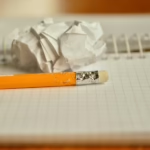
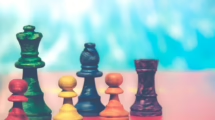

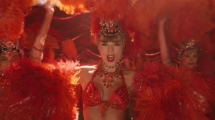

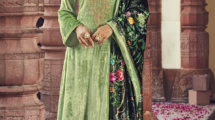




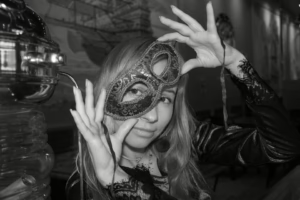


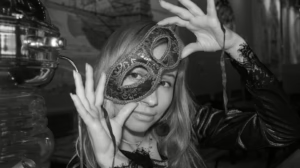
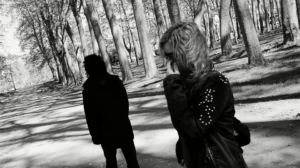





Add Comment